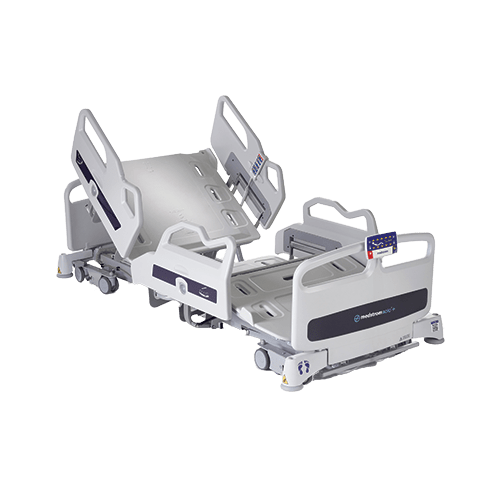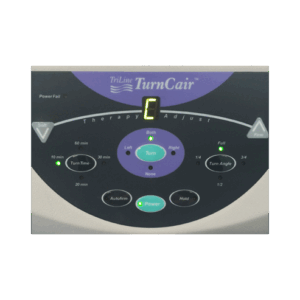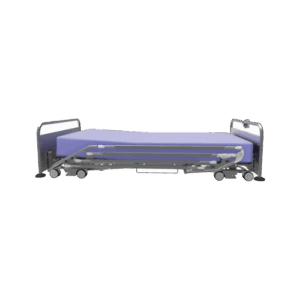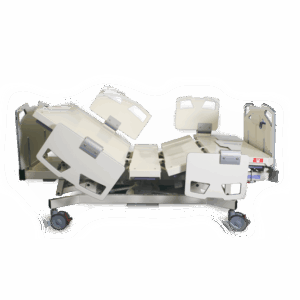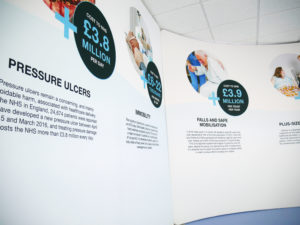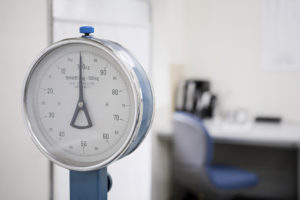
Temperature Control in Plus-Size/Bariatric Patients
Temperature control in plus-size/bariatric patients is very important for preserving skin integrity. Any increase in metabolic rate causes the body (including the skin) to heat up. This results in sweat production to attempt to reduce the temperature, which increases surface moisture.
In addition, when a patient is placed on a support surface, body heat can become trapped, causing sweating and moisture build-up. Any moisture build-up on the skin can lead to maceration and moisture lesions. Moisture also increases friction and shear between the skin and surface, increasing pressure ulcer risk.1
Plus-size patients are at higher risk of moisture build-up than patients who are a healthy weight through both skin warming and excessive moisture. Detailed reasons for this are discussed at the bottom of this article. These must be reduced to help prevent skin breakdown.1
Temperature Control Solutions for Plus-size Patients
Low air loss therapeutic surfaces: Low air loss (LAL) therapy continuously circulates air into the therapeutic surface. The cells have laser cut holes which allow air out. The more weight on the cells, the more air is displaced. This provides two important benefits:
- Immersion: The mattress reduces contact pressure with the skin by immersion and envelopment, which increases the surface area over which the patient is supported. As the patient moves, the air is redistributed to maintain low pressures.
- Skin cooling: LAL therapy uses continuous air flow which conducts heat downwards from the skin and through the vapour-permeable surface cover. This helps to regulate the temperature, humidity and airflow next to the skin surface, known as the skin microclimate.2 Skin is cooled, so moisture production is reduced and vapour is removed to keep the skin cooler and drier.
LAL is often the therapeutic surface of choice for plus-sized patients because it offers continuous low pressure in combination with skin microclimate management. Some LAL surfaces offer additional therapeutic benefits; the TurnCair 1000 low air loss bariatric mattress also offers lateral tilt to reduce manual handling and facilitate care for patients weighing up to 454kg.
Profiling Bed: A suitable profiling bed can also be used to help with temperature control in bariatric patients. Repositioning the patient results in weight redistribution. This can be done effortlessly by the caregivers or the patient if they are able using the electric controls. The patient may also be able to use the side rails to assist with turning. All this aids with skin microclimate management.
A bed which can easily extend widthways is beneficial when extra space is needed to safely turn patients onto their side. The Bari10A bariatric bed can do this in individual sections, simultaneously allowing caregivers closer access for reduced moving and handling risks whilst providing extra width for the patient where needed.
A profiling bed which can be programmed to a customisable height for mobilisation, such as the MMO 8000 bariatric bed, may allow a patient to mobilise who wouldn’t be able to do so from a higher bed. This allows better access to the patient, makes hygiene (including drying the patient) easier and allows free air circulation around the skin.
Moisture Damage: Risk Factors for Plus-size Patients
Plus-size patients are particularly at risk of moisture damage because:
- Natural skin folds such as the groin and buttocks, and other large folds (for example in the abdomen, elbows and knees and under breasts) may be difficult to access for washing and drying, particularly for patients with limited mobility. Moisture may build up in these areas due to sweat, or water may be unintentionally left there if the patient isn’t thoroughly dried after washing.
- Warm microclimates can develop in skin folds and where skin is in contact with a surface, increasing moisture through localised sweating.
- An unwell plus-size patient may have vulnerable skin, due to their current state of health combined with long-standing poor nutrition and reduced blood circulation to the skin. Any incontinence will exacerbate this.
- An immobile plus-size patient will have a large area of skin in continuous contact with the surface they are on unless they are repositioned. There is therefore the potential for significant heat and moisture build-up, especially if the surface traps body heat and moisture.
View Our Range of Bariatric Products
References
1. Lachenbruch C. Skin cooling surfaces: estimating the importance of limiting skin temperature. Ostomy Wound Manage. 2005;51(2):70-79.
2. Kottner J, Black J, Call E, Gefen A, Santamaria N. Microclimate: A critical review in the context of pressure ulcer prevention. Clin Biomech (Bristol, Avon). 2018;59:62-70.





